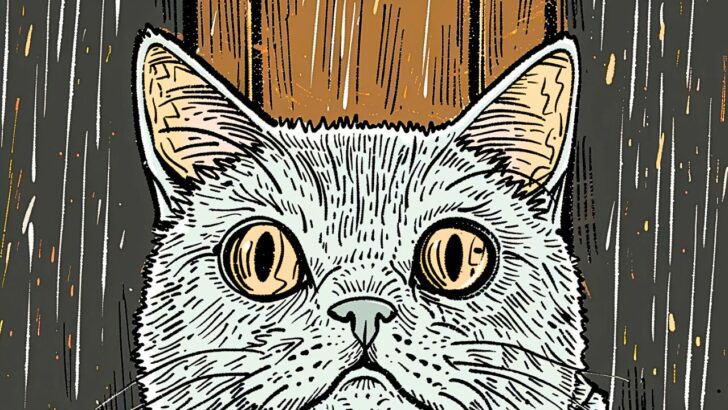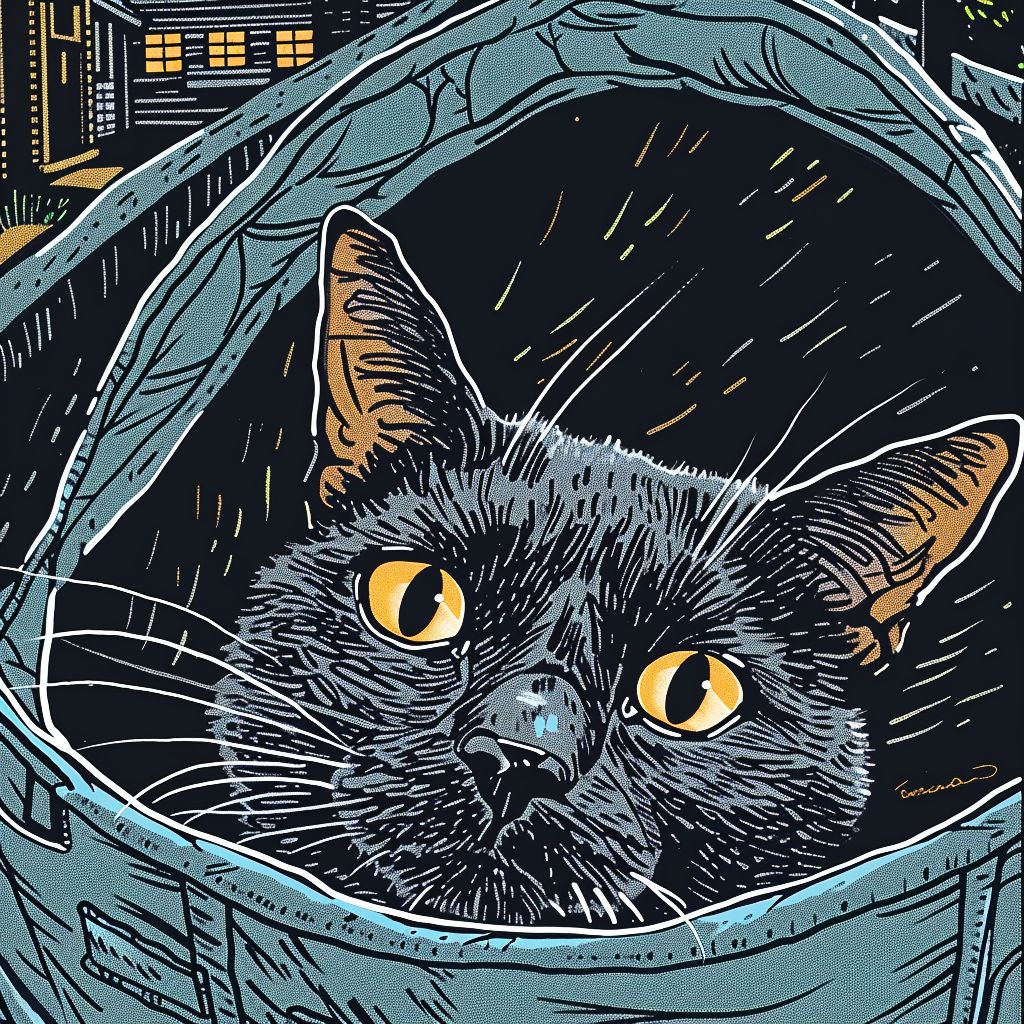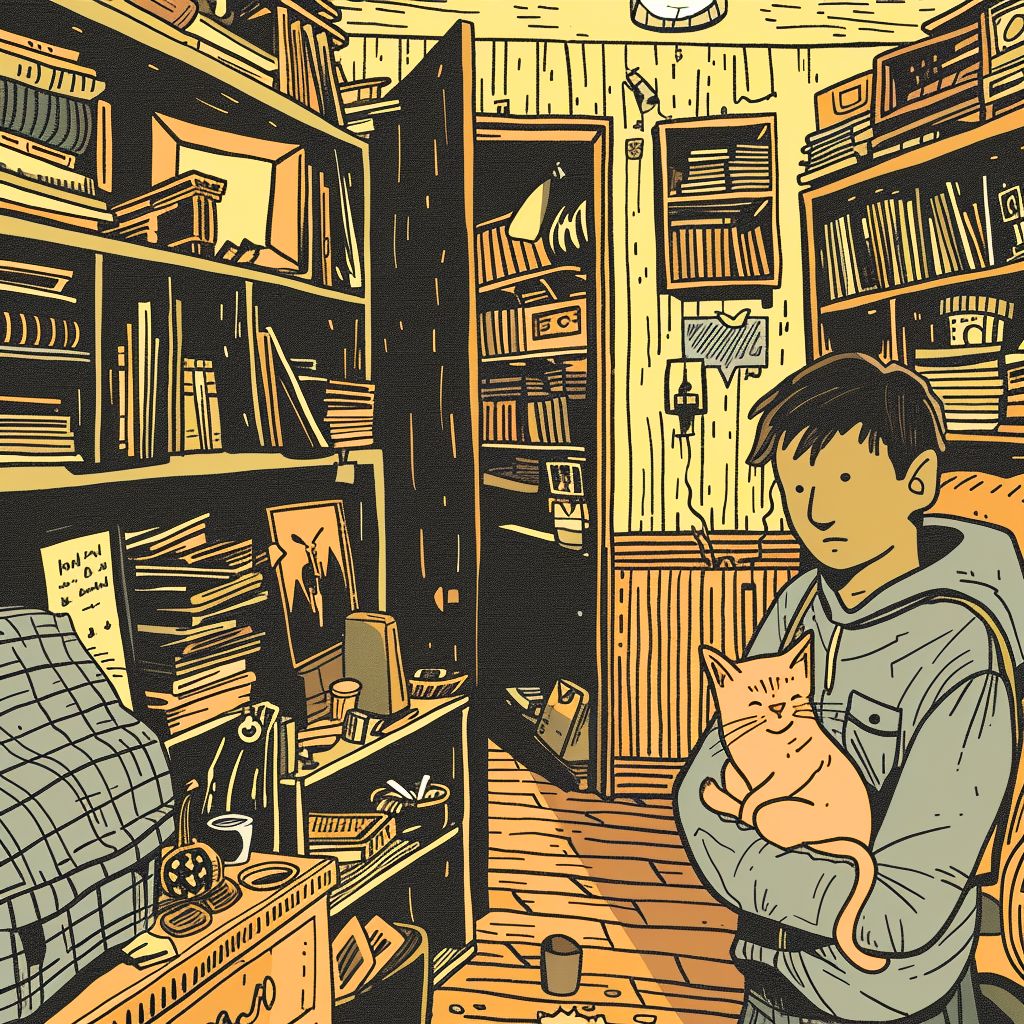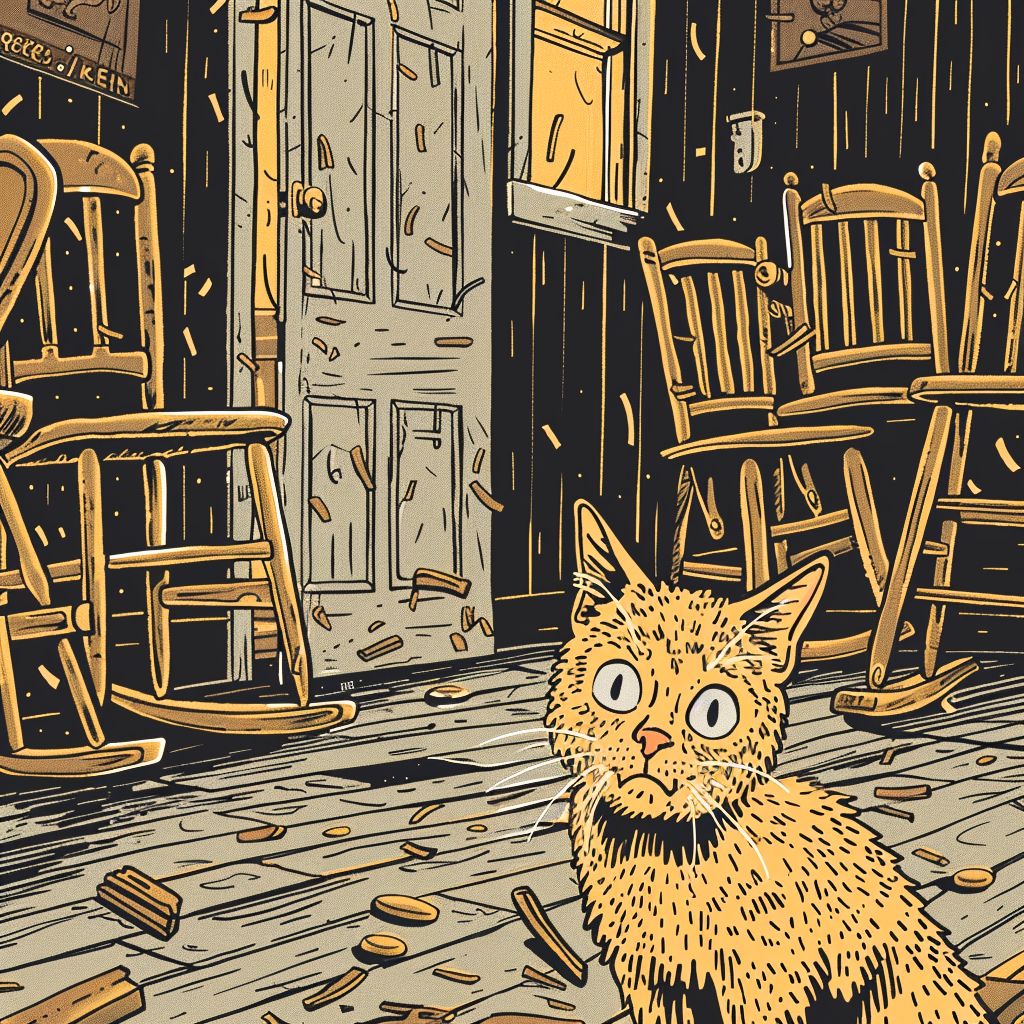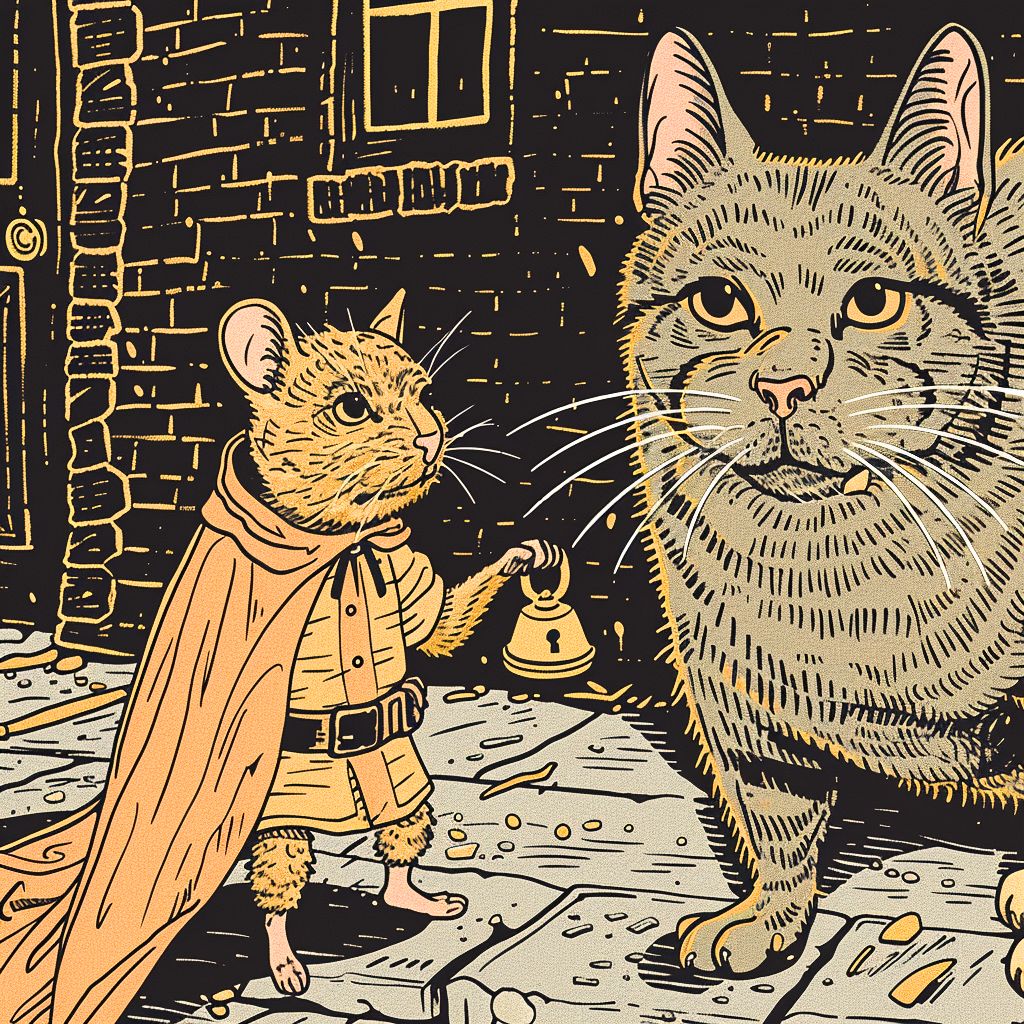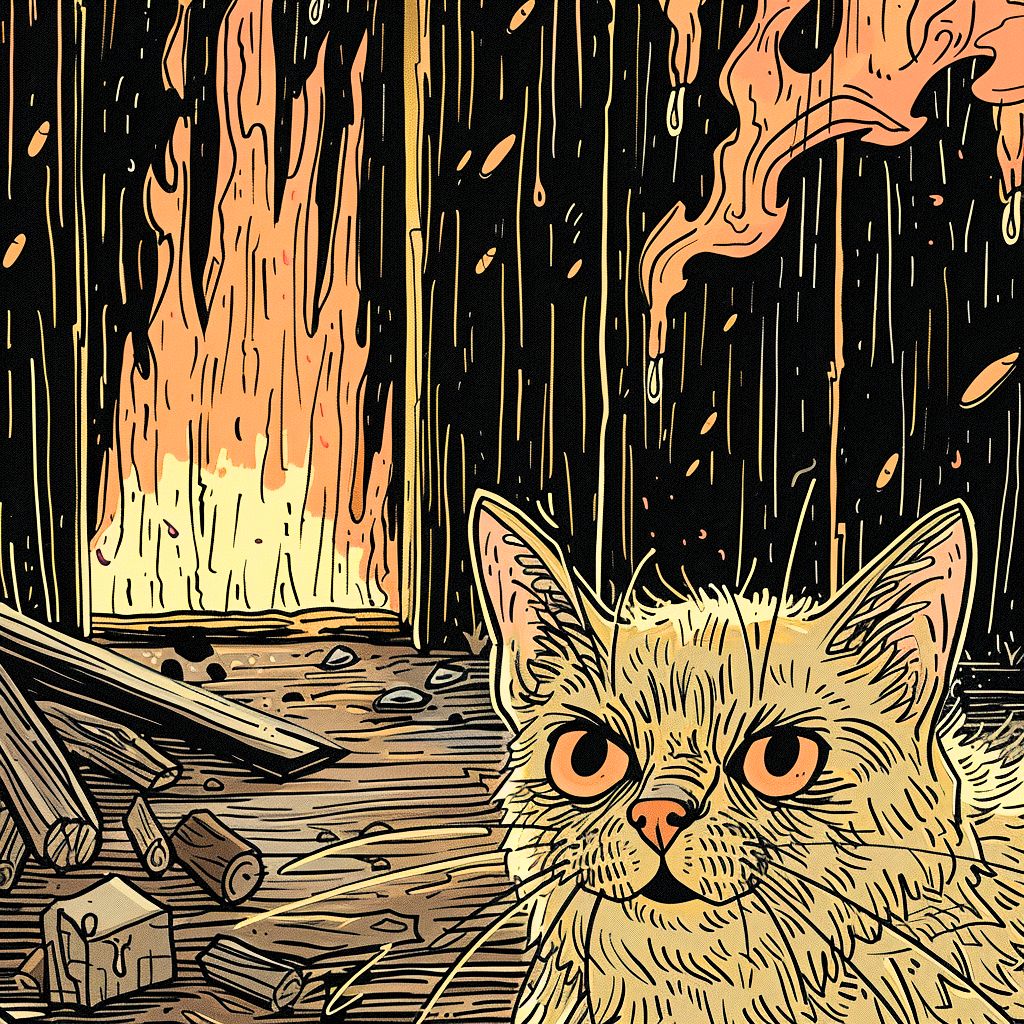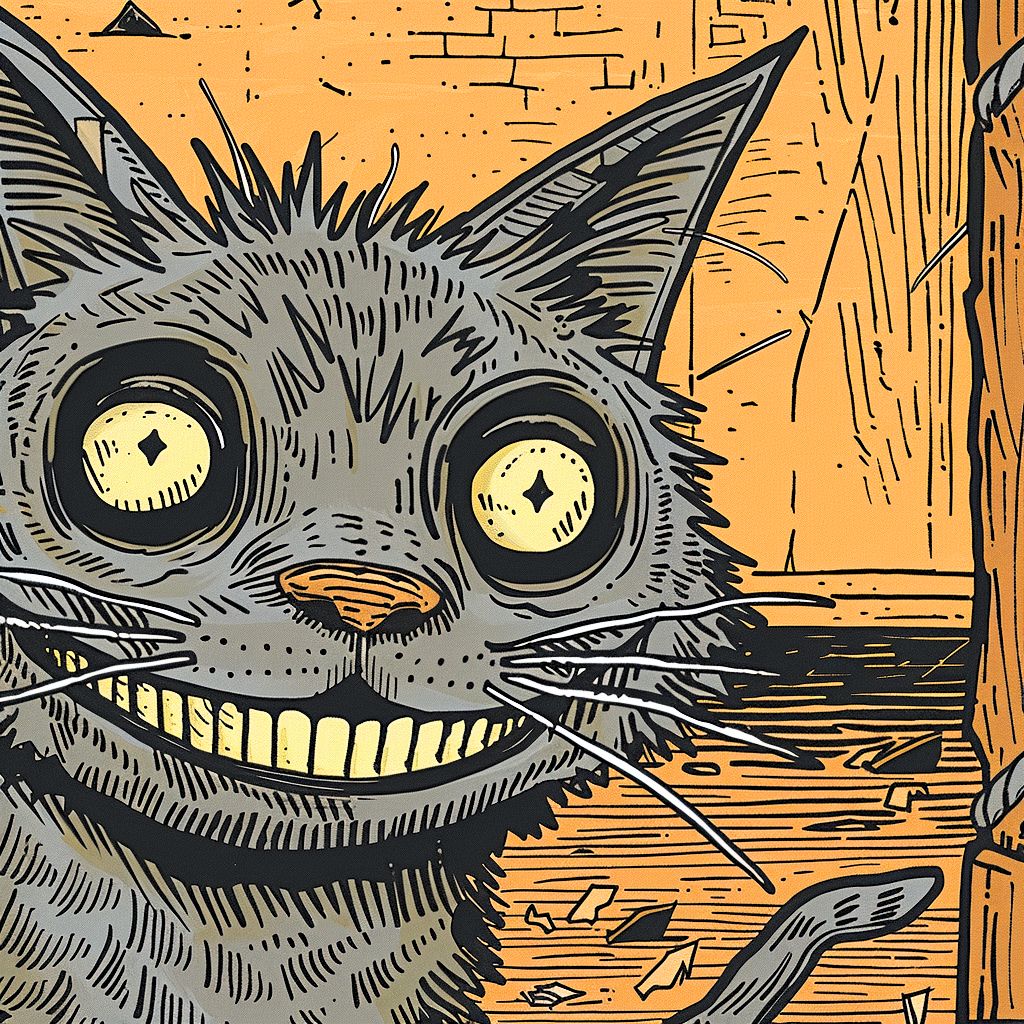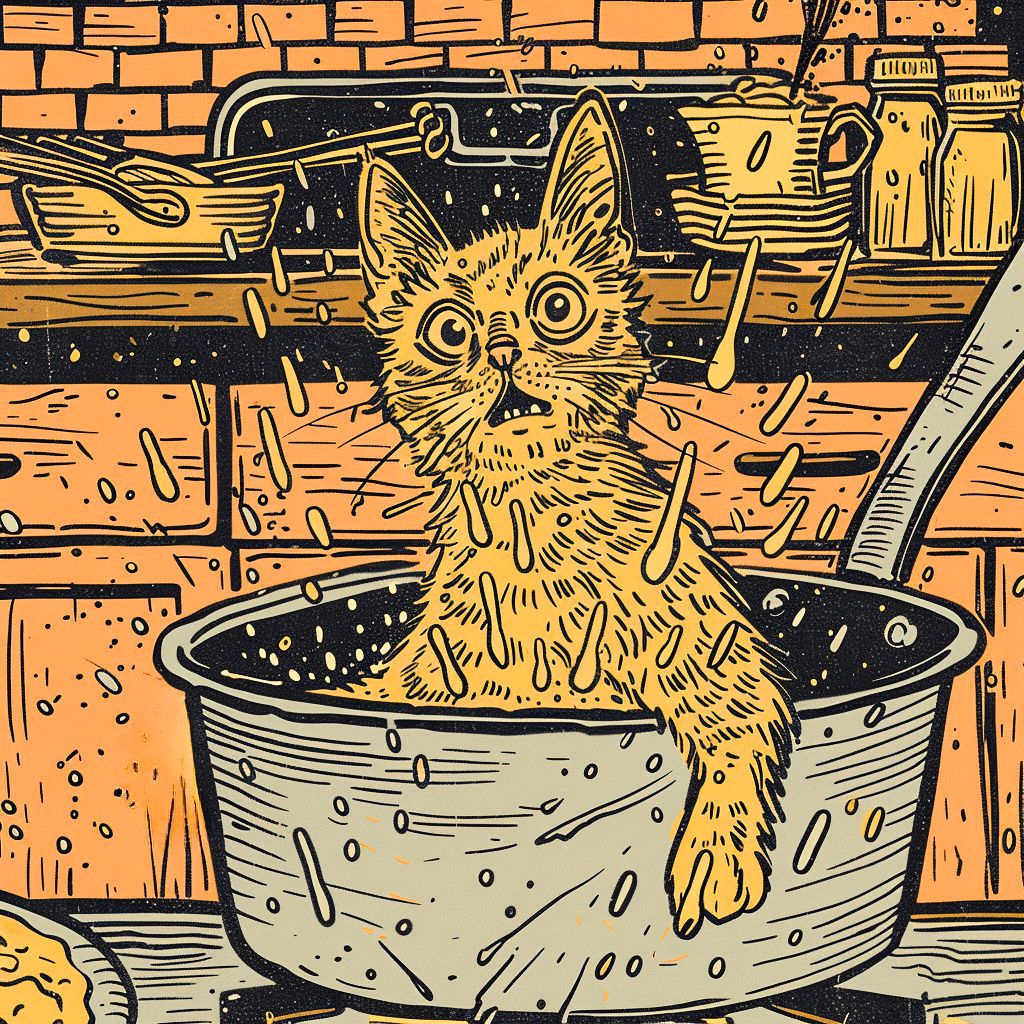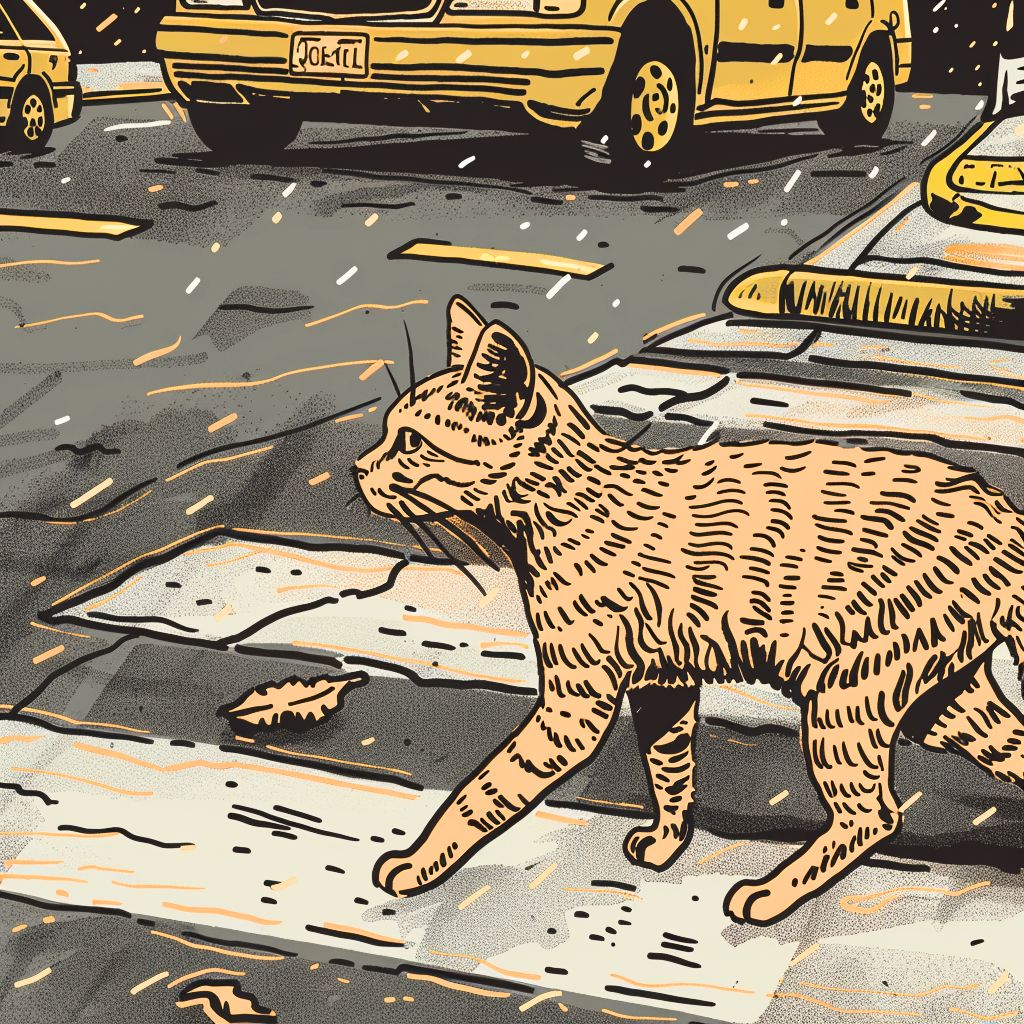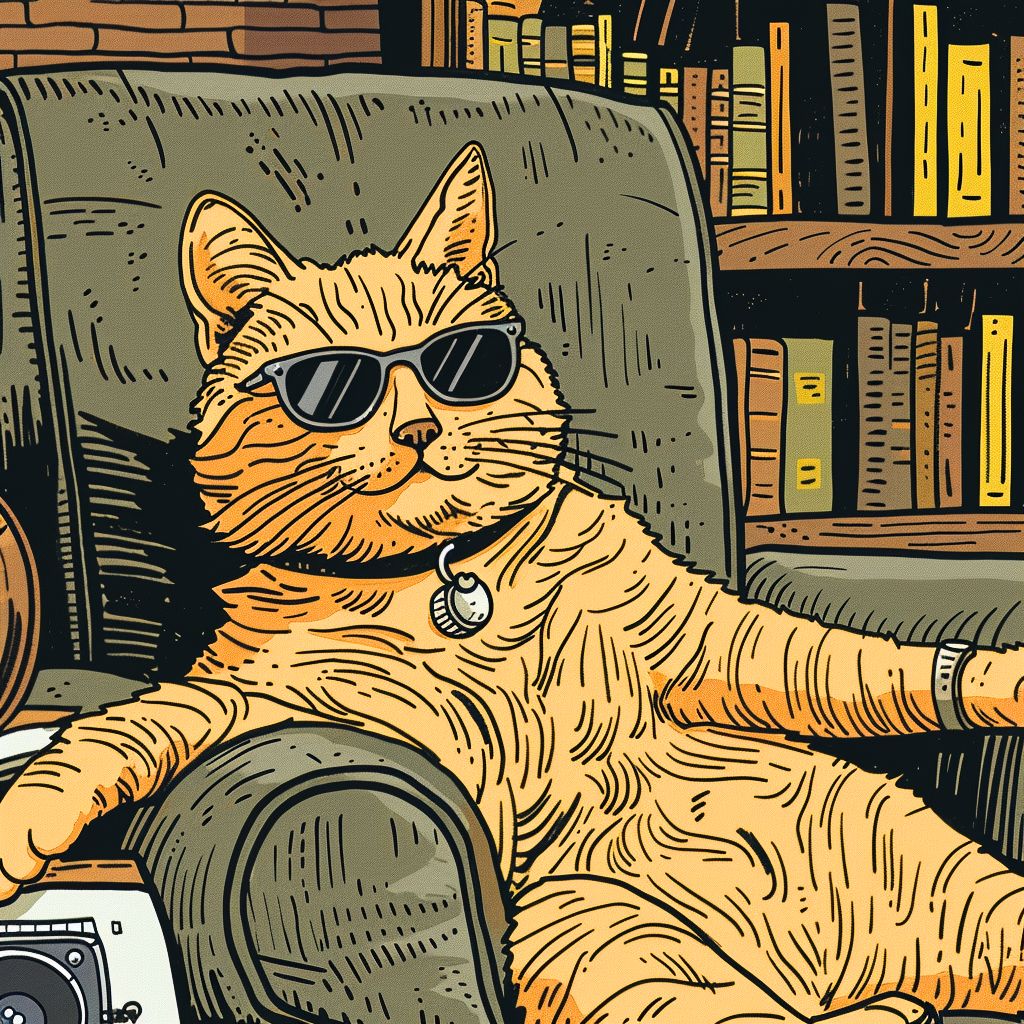Welcome, language enthusiasts and cat aficionados, to a whimsical journey through the world of cat idioms!
In the vast expanse of the English language, where phrases frolic like playful kittens, our feline companions have inspired a fascinating array of expressions as enigmatic as a cat’s nocturnal adventures.
Why, you might wonder, do cats hold such sway over our language?
Is it their mythical nine lives, their graceful landings, or perhaps their piercing stares that captivate us?
Whatever the reason, cats have effortlessly integrated themselves into our language, lounging within our everyday phrases and meowing their way into our idioms.
In this article, we’re immersing ourselves in the captivating realm of cat idioms that enrich our conversations, capturing the essence of feline behavior and intertwining it with our verbal exchanges.
So, sharpen your claws on the post of knowledge as we delve into the heart of cat idioms.
Whether you’re as calm as a cucumber or as jittery as a cat on a hot tin roof, this collection promises to add a delightful touch of feline charm to your language.
Let’s venture forth together and unravel the threads of cat-inspired expressions!
1. Let the Cat out of the Bag
This idiom, “Let the cat out of the bag,” sparks images of secrets scurrying out much like a cat making a dash for freedom from a confining bag.
It refers to revealing secrets or accidentally disclosing information meant to remain hidden.
Just envision the surprise on everyone’s faces as the proverbial cat leaps out—not unlike the shock of discovering a hidden truth.
While tracking down its exact roots may be as challenging as keeping a cat entertained with a single toy, one popular theory harks back to medieval market days.
Dishonest traders might try to trick buyers into purchasing a bag with a cat inside, claiming it was a piglet. The truth about the scam was revealed when the cat was released.
It’s the go-to phrase for those moments when someone spills the beans, whether it’s revealing a surprise party too early or accidentally sharing confidential news.
“Let the cat out of the bag” frolics on the casual end of the spectrum.
It’s at home in laid-back conversations, light-hearted email exchanges, or casual workplace banter. In a boardroom presentation or a formal document, however, it might stick out like a cat at a dog show.
Remember, while it can be tempting to release that feline from its sack, consider the impact of your revelations. Sometimes, it’s best to keep the bag zipped up a little longer, ensuring the surprise remains a surprise.”
- Example 1: The team had no clue about the upcoming merger until Maria, quite unintentionally, let the cat out of the bag during lunch.
- Example 2: Trying to keep the new product design a secret was futile; someone in the meeting inadvertently let the cat out of the bag.
2. Cat got your tongue?
Ever been so surprised or flustered that words just fail you? That’s when someone might ask, “Cat got your tongue?”
It’s a playful inquiry into why someone is being unusually quiet or unable to speak.
You can almost picture a mischievous cat, having just dashed across the room, now perched on your shoulder, gently placing a paw over your lips.
The phrase’s origins are as shadowy as a cat slinking through the alleyways at night.
Some speculate it dates back to ancient Egypt, where liars and blasphemers’ tongues were supposedly cut out as punishment and fed to the cats (though this is more legend than fact).
Another less grim theory ties it to the English navy and the cat-o’-nine-tails whip used for punishment; a sailor who had been whipped was often so traumatized that he wouldn’t speak for a time.
It pops up in casual conversation, especially in moments of unexpected silence or when someone is hesitant to answer a question. It’s that nudge to encourage someone to share what’s on their mind, packaged in a lighthearted if slightly cheeky, manner.
This idiom frolics on the playful side of language, making it a great fit for informal settings among friends or family.
In a professional context, it might still make an appearance but in a much more cautious tone, mindful of the setting and the rapport between the people involved.
So next time you find yourself speechless, and someone hits you with a “Cat got your tongue?”, just remember, it’s their way of coaxing those words out—no actual cats involved!”
- Example 1: After the meeting went silent, the manager looked around and asked, “What’s the matter, cat got your tongue?”
- Example 2: When I asked my nephew why he was sneaking around the kitchen, all he could do was shrug, prompting me to tease, “What’s wrong, cat got your tongue?”
3. No Room to Swing Your Cat
Ever found yourself in a space so cramped that turning around feels like a puzzle? That’s when you might say there’s “no room to swing your cat.” Now, before you start worrying about the welfare of cats, rest assured no actual felines are involved in this expression.
It’s all about describing an exceptionally small or confined place, where even the simplest movements become an acrobatic feat.
The origins of this peculiar saying are a bit tangled. One popular theory suggests it refers not to a household cat but to the cat-o’-nine-tails whip used in naval discipline. The tight quarters below decks provided insufficient space for the whip’s use, hence the expression.
However, it’s more likely that the phrase simply uses the imagery of swinging a cat in a small area to illustrate a lack of space.
This idiom fits snugly into conversations about small apartments, crowded parties, or any situation where space is at a premium.
It’s a vivid way to emphasize just how little room there is, often leading to a chuckle or two at the mental image it conjures.
Given its colorful and somewhat humorous nature, this idiom is best suited for informal contexts.
It’s a casual, light-hearted way to comment on cramped conditions and is likely to be met with smiles in social settings, though it might get a few puzzled looks in a boardroom or formal report.
Remember, next time you’re describing a particularly small space, “no room to swing your cat” is a whimsical way to get your point across—just make sure the cats are safely napping elsewhere!”
- Example 1: I invited ten people over, not realizing my living room has no room to swing a cat. It was a cozy gathering!
- Example 2: Looking at the tiny office space, she remarked, “There’s hardly room to swing a cat in here, how do you manage?”
4. As nervous as a cat in a room full of rocking chairs
This vivid idiom paints a picture of extreme anxiety or unease: being “as nervous as a cat in a room full of rocking chairs.”
It evokes the image of a jittery cat, tiptoeing around to avoid getting its tail caught under a rocker.
It’s a humorous way to express a state of heightened worry, where comfort is hard to find and the potential for mishap is high.
The exact origins of this phrase are as elusive as a cat’s midnight whereabouts, but its appeal lies in the universal understanding of a cat’s keen sense of self-preservation.
The mental image of a cat anxiously navigating through a maze of moving rockers captures the essence of being on high alert, making it a relatable metaphor for anyone feeling out of their element or in constant worry about what might go wrong next.
It’s commonly used in situations where someone is feeling particularly anxious or out of place, often in a new or uncomfortable setting.
This idiomatic expression is perfect for lightening the mood by adding a touch of humor to the confession of one’s anxieties.
This phrase is used in more casual conversations. Its humorous and slightly exaggerated nature makes it ideal for informal discussions or personal narratives.
It might not find a cozy lap to curl up in formal documents or presentations, but it’s perfect for a coffee chat or a comforting talk among friends.
So, the next time you find yourself feeling particularly on edge, perhaps a chuckle about being as nervous as a cat in a room full of rocking chairs might help you navigate through your own “room” a little more easily.
- Example 1: Before my first public speaking event, I was as nervous as a cat in a room full of rocking chairs.
- Example 2: Seeing all the senior executives in the meeting, the new intern felt as nervous as a cat in a room full of rocking chairs.
5. To Bell the Cat
To undertake a task that’s bold and risky yet necessary, think of the daunting idea of “To Bell the Cat.”
It conjures the image of attempting to place a bell around a cat’s neck to warn birds of its approach—a mission that’s not for the faint-hearted, given the cat’s likely reaction.
This idiom is all about stepping up to do something difficult and perilous, but ultimately for the greater good.
This phrase has its roots in a medieval fable. The story goes that a group of mice, tired of constantly being preyed upon by a cat, proposed to place a bell around its neck to warn them of its coming.
While all agreed the plan was brilliant, no mouse was brave enough to volunteer to bell the cat, highlighting the risk of noble but dangerous tasks.
It’s used to describe situations where someone needs to confront a difficult issue or take on a challenging task that others are reluctant to tackle.
This idiom adds a layer of valor and daring to the endeavor, often inspiring respect or admiration for the person willing to take the risk.
“To Bell the Cat” has a classic, almost literary quality that allows it to transcend the usual boundaries of formality.
It can be equally at home in casual conversation as it is in more serious, strategic discussions. Its usage, however, is more about the context of bravery and risk-taking than about the setting in which it is said.
Whether you’re facing a room of corporate bigwigs or confronting societal injustices, remembering the courage it takes to “Bell the Cat” might just be the encouragement needed to take that first bold step.”
- Example 1: The team knew that approaching the CEO about the policy changes was risky, but Maya was willing to bell the cat.
- Example 2: Everyone complained about the outdated equipment, but it was Jonas who belled the cat and spoke to management.
6. A Cat in Hell’s Chance
The idiom ‘A Cat in Hell’s Chance’ paints a vivid picture of extreme improbability or near impossibility, but contrary to what the phrase suggests, it doesn’t involve actual cats.
Instead, it conveys the idea that the likelihood of success in a particular situation is incredibly slim, akin to a cat’s chances of surviving in the fiery depths of hell.
The origins of this phrase, like its imagery, are quite stark. It emphasizes the direness of a situation by juxtaposing the vulnerability of a cat with the unfathomable horrors of hell.
When someone mentions that there’s ‘a cat in hell’s chance’ of something happening, they essentially say that the odds are overwhelmingly stacked against it.
Although the imagery may seem unsettling, the idiom is commonly employed in both casual and formal contexts to emphasize the extreme improbability of a given outcome.
It’s a way of underscoring just how difficult or unlikely a task or goal may be to achieve.
Given its vivid imagery and slightly morbid connotations, using this idiom judiciously is essential, especially in more formal or sensitive settings.
However, when used appropriately, it can effectively convey the notion of facing insurmountable odds.
So, the next time you encounter a seemingly impossible challenge, remember the vivid imagery of ‘A Cat in Hell’s Chance,’ and perhaps it will help you appreciate the gravity of the situation and approach it with appropriate caution and realism.”
Example 1: Despite the heavy rain and traffic, John thought he still had ‘a cat in hell’s chance’ of making it to the airport on time.
Example 2: Trying to convince her parents to let her go on a solo trip worldwide, Sarah knew she had ‘a cat in hell’s chance’ of success, but she was determined to try nonetheless.
7. Grinning Like a Cheshire Cat
To smile enigmatically or self-satisfied, one might be described as “Grinning like a Cheshire Cat.”
This idiom paints the picture of someone wearing a broad, mysterious smile, one that suggests they know something others do not. It’s a grin that seems to linger, intriguing and puzzling to those who witness it.
The popularity of this phrase skyrocketed with Lewis Carroll’s “Alice’s Adventures in Wonderland,” where the Cheshire Cat is known for its distinctive, lingering grin.
While Carroll’s tale gave the expression widespread recognition, the phrase’s origins likely predate the book.
Various theories suggest it could stem from the smiling lions on the crest of Cheshire, England, or from the large cheese wheels produced in the area that were molded to resemble a smiling cat.
It’s often used to describe someone who looks particularly pleased with themselves, especially when the reason for their amusement is not immediately clear to others.
This idiom adds a layer of intrigue and whimsy to conversations, hinting at hidden knowledge or an inner joke.
While “Grinning like a Cheshire Cat” has a playful, somewhat literary quality, it finds its place in both informal and semi-formal contexts.
Its use is more about the expression it describes than the setting, making it suitable for a wide range of conversations, from casual chats to creative writing.
So, the next time you catch someone with that knowing, satisfied smirk, you’ll have the perfect phrase to capture the moment: they’re truly “Grinning like a Cheshire Cat.”
- Example 1: After acing the final exam without breaking a sweat, Maria walked out of the classroom grinning like a Cheshire Cat.
- Example 2: When asked about his upcoming surprise for the anniversary, he just sat there, grinning like a Cheshire Cat, leaving everyone more curious.
8. To Turn a Cat in Pan
An idiom that might raise eyebrows at first glance, “To turn a cat in pan” isn’t about culinary mishaps with pets but rather describes the act of switching allegiances or betraying one’s companions for personal gain.
It’s a vivid metaphor for a sudden and often opportunistic change in position, akin to flipping something unexpectedly, much like one might flip a pancake.
This phrase’s roots are nestled in past culinary traditions, where turning or flipping food in a pan was a common kitchen task.
Over time, it evolved into a metaphorical expression in English folklore, symbolizing the act of betrayal or shifting loyalty as easily as one might turn food in a frying pan.
Its exact historical origins are murky, but it captures the essence of treachery with a domestic twist.
While not as common as other idioms, “to turn a cat in pan” is a colorful way to describe the fickleness of alliances, whether in politics, business, or personal relationships.
It’s particularly effective in situations where someone’s loyalty is in question, adding a layer of historical charm to the observation.
Due to its archaic nature and specific imagery, this idiom leans more towards informal or narrative-driven contexts.
It’s a gem for storytellers, writers, or anyone fond of rich, descriptive language that evokes a sense of tradition and intrigue.
Remember, while the idiom ‘to turn a cat in pan’ might conjure amusing visuals, its application tells a cautionary tale about trust and loyalty, served with a side of historical flair.
- Example 1: Despite years of camaraderie, when the opportunity arose, he didn’t hesitate to turn a cat in pan, aligning with the competitors.
- Example 2: The political landscape is rife with examples of allies who, at the critical moment, decided to turn a cat in pan for their advantage.
9. Like a Cat with Nine Lives
Someone who seems to escape from dangerous or tricky situations unscathed might be said to be “like a cat with nine lives.”
This idiom celebrates the remarkable ability to avoid harm or failure against all odds, much like the legendary resilience of cats, which are often thought to survive numerous mishaps thanks to their supposed nine lives.
The belief that cats have multiple lives is ancient and widespread, with various cultures attributing different numbers of lives to these agile creatures.
The number nine, often associated with magic and longevity in folklore, seems to have stuck in the English-speaking world, perfectly encapsulating the cat’s knack for surviving situations that would spell doom for others.
It’s a phrase that’s often used admiringly or incredulously to describe someone who repeatedly survives accidents or difficult situations.
Whether it’s dodging a major accident or bouncing back from what seemed like a catastrophic mistake, being “like a cat with nine lives” is all about resilience and luck.
This versatile idiom fits comfortably in casual conversations and more formal narratives. Its use is more about evoking the remarkable survival or resilience of an individual rather than adhering to a specific level of formality.
In every tale of escape or survival, the idea of having nine lives offers a playful nod to the mystique and agility of our feline friends, reminding us of the power of resilience and a bit of luck.
- Example 1: After surviving his third major car accident unscathed, his friends began to joke that he was like a cat with nine lives.
- Example 2: The CEO has faced countless business failures, yet always manages to come out on top, like a cat with nine lives.
10. All Cats Are Grey in the Dark
This idiom, “All cats are grey in the dark,” suggests that under certain circumstances, differences become indistinguishable.
It’s a reminder that in the absence of light or clarity, distinctions we might consider significant—such as appearance—fade away, leaving us to rely on other senses or qualities to form judgments.
The phrase is attributed to Benjamin Franklin, among others, and reflects a wisdom that transcends time and culture.
Its roots delve into the observation that at night, without light aid, all cats appear uniformly grey, a metaphor for the idea that superficial differences vanish in the dark.
It’s often used to suggest that external differences among people are insignificant, especially in situations or contexts where those differences cannot be discerned.
This idiom can serve as a reminder of our common humanity, or more lightheartedly, of how in the dark, all pretenses fall away.
“All cats are grey in the dark” walks the line between casual conversation and philosophical musing, making it adaptable to various contexts.
Its application can be profound or playful, fitting in discussions about equality and love and in more mundane, everyday observations.
This idiom encourages us to look beyond the superficial, recognizing that under certain conditions, the differences that often divide us or catch our attention lose their significance, reminding us of the deeper connections that bind us together.”
- Example 1: Debating over the most attractive celebrity seems pointless when you remember that all cats are grey in the dark.
- Example 2: He argued that in the grand scheme of things, wealth and status don’t matter, quoting, “All cats are grey in the dark,” to make his point.
11. Cool Cat
Someone exuding an effortless aura of style, calmness, and appeal is often dubbed a “cool cat.”
This idiom, steeped in the jazz and beatnik scenes of the mid-20th century, captures the essence of being unflappably stylish and composed, no matter the situation.
It’s the person in the room who, without trying too hard, naturally attracts admiration and attention, embodying the sleek, poised, and confident demeanor of a cat sauntering through life.
The term “cool cat” originates in the jazz clubs and the vibrant cultural movements of the 1940s and 1950s, where “cool” was the ultimate compliment, denoting a sophisticated blend of style, originality, and detachment.
Cats, with their calm demeanor and graceful movements, became the perfect metaphor for individuals who epitomized this sought-after coolness.
It’s a fun, affectionate way to describe someone who stands out for their confidence, style, or laid-back attitude.
Whether it’s the friend who always knows the best spots in town or the colleague whose presentations are effortlessly compelling, calling someone a “cool cat” is a nod to their charismatic and cool demeanor.
“Cool cat” is decidedly informal, dripping with vintage charm and a casual flair. It’s at home in social gatherings, creative discussions, and anywhere else where personality and style are celebrated.
While its roots are retro, its appeal is timeless, making it a perfect compliment in any laid-back or creatively inclined setting.
Embrace the cool, the calm, and the collected essence of being a “cool cat,” and you might just find yourself sauntering through life’s challenges with a bit more grace and a lot more style.”
- Example 1: Everyone agreed that Jasmine, with her knack for jazz piano and vintage fashion, was the coolest cat at the music school.
- Example 2: Even under pressure, he remains a cool cat, handling last-minute changes with a smile and a plan.
Pawsitively Purrfect: Wrapping Up Our Whisker-twitching Adventure
In the enchanting world of cat idioms, we’ve set off on a delightful escapade, exploring the unique traits and charms of our feline-inspired phrases.
From letting the cat out of the bag to turning a cat in pan, we’ve delved into a treasure trove of linguistic delights.
As we wrap up our meow-velous journey, let’s carry with us the laughter of a Cheshire cat, the bravery of one willing to bell the cat, and the cool confidence of a true cool cat.
These idioms, like mischievous kittens, have left their mark on our conversations, adding a sprinkle of whimsy and a dash of cat-titude.
So, my fellow language-loving cat enthusiasts, let’s keep our curiosity as sharp as a cat’s claws and our wit as quick as a cat’s reflexes.
With every conversation, let’s embrace the playful spirit of our feline friends and continue to unravel the yarn of words together. After all, in the world of language, there’s always room for a little catnip-induced humor!
And if you’re hungry for more cat-tastic idioms, don’t forget to check out our other article filled with awesome cat idioms.
Until our next purr-fect adventure, keep meow-ing on!

Hey fellow Linguaholics! It’s me, Marcel. I am the proud owner of linguaholic.com. Languages have always been my passion and I have studied Linguistics, Computational Linguistics and Sinology at the University of Zurich. It is my utmost pleasure to share with all of you guys what I know about languages and linguistics in general.

